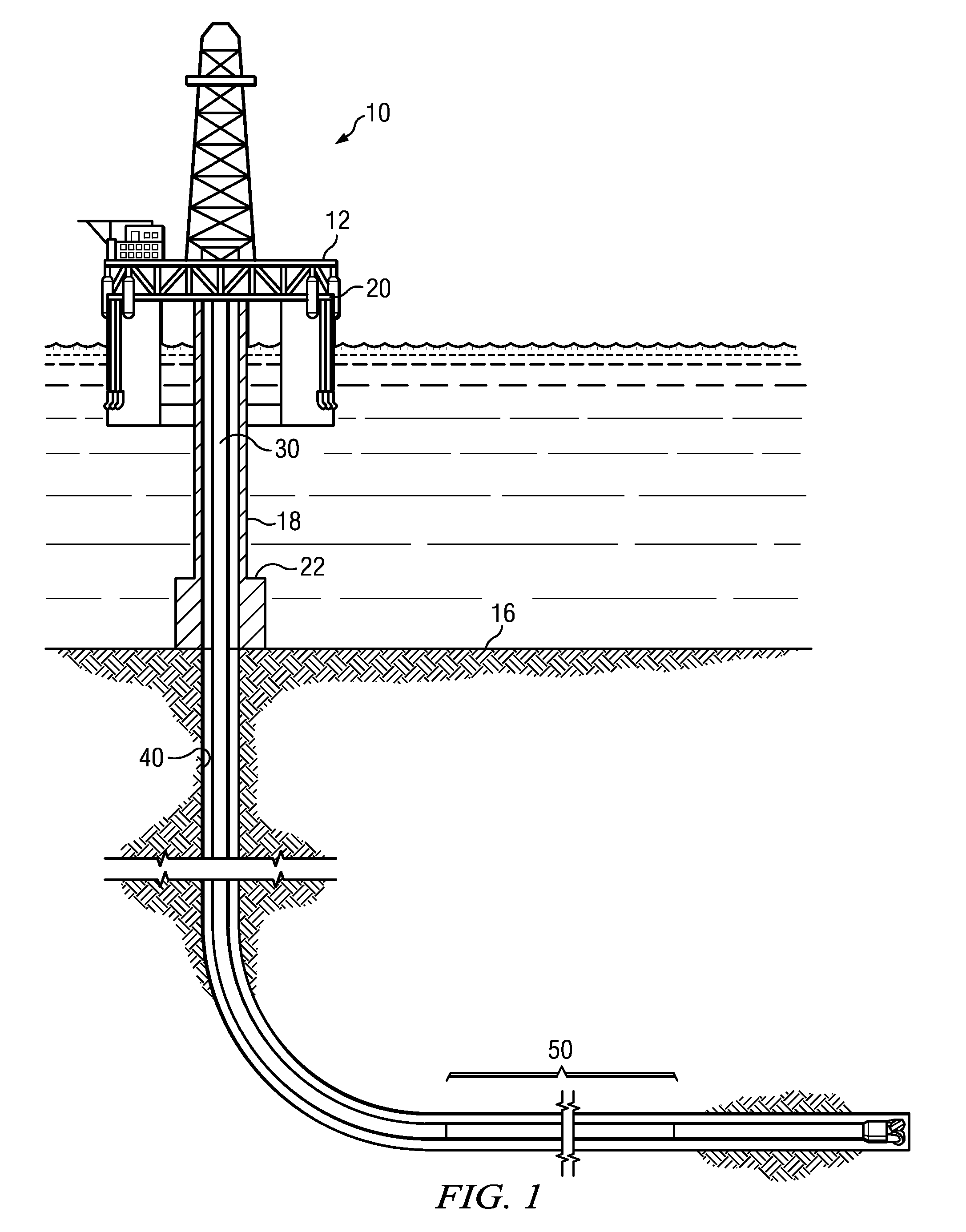Compensated Tri-Axial Propagation Measurements
a tri-axial propagation and compensation technology, applied in the field of downhole electromagnetic logging, can solve the problems of insensitive bending and alignment angle error in disclosed methods and apparatus, complex actual formation structure, and inability to provide fully gain compensated tri-axial propagation measuremen
- Summary
- Abstract
- Description
- Claims
- Application Information
AI Technical Summary
Benefits of technology
Problems solved by technology
Method used
Image
Examples
embodiment 50
[0026]FIG. 2C depicts an alternative (and more general) electromagnetic measurement tool embodiment 50′. Measurement tool 50′ is similar to measurement tool 50 (FIGS. 2A and 2B) in that it includes a first tri-axial transmitter T1′ and a first tri-axial receiver R1′ deployed on a first sub 51′ and a second tri-axial transmitter T2′ and a second tri-axial receiver R2′ deployed on a second sub 56′. Measurement tool 50′ differs from measurement tool 50 in that the z-axis transmitter antennas T1z′ and T2z′ and the z-axis receiver antennas R1z' and R2z′ are not collocated with the corresponding x- and y-axis transmitter and receiver antennas, but are axially offset therefrom. In general, the x- and y-axis transmitter and receiver antennas are collocated with one another while collocation of any one or more of the corresponding z-axis antennas is optional.
embodiment 100
[0027]FIG. 3A depicts a flow chart of one disclosed method embodiment 100. An electromagnetic measurement tool (e.g., measurement tool 50 or 50′ on FIG. 2) is rotated in a subterranean wellbore at 110. Electromagnetic measurements are acquired at 120 while the tool is rotating and processed to obtain harmonic voltage coefficients. The harmonic voltage coefficients are rotated mathematically at 130 to simulate rotation of the x and y antennas in the R1 and R2 receivers and the T2 transmitter such that they are rotationally aligned with the x and y antennas in the T1 transmitter. Such rotation removes the effect of the offset angle α and misalignment angle γ on the measurements. Ratios of selected ones of the rotated voltage coefficients may then be processed to obtain gain compensated measurement quantities at 140.
[0028]FIG. 3B depicts a flow chart of an optional, more detailed embodiment 100′ of the method 100 depicted on FIG. 3A. An electromagnetic measurement tool is rotated in a ...
PUM
 Login to View More
Login to View More Abstract
Description
Claims
Application Information
 Login to View More
Login to View More - R&D
- Intellectual Property
- Life Sciences
- Materials
- Tech Scout
- Unparalleled Data Quality
- Higher Quality Content
- 60% Fewer Hallucinations
Browse by: Latest US Patents, China's latest patents, Technical Efficacy Thesaurus, Application Domain, Technology Topic, Popular Technical Reports.
© 2025 PatSnap. All rights reserved.Legal|Privacy policy|Modern Slavery Act Transparency Statement|Sitemap|About US| Contact US: help@patsnap.com



